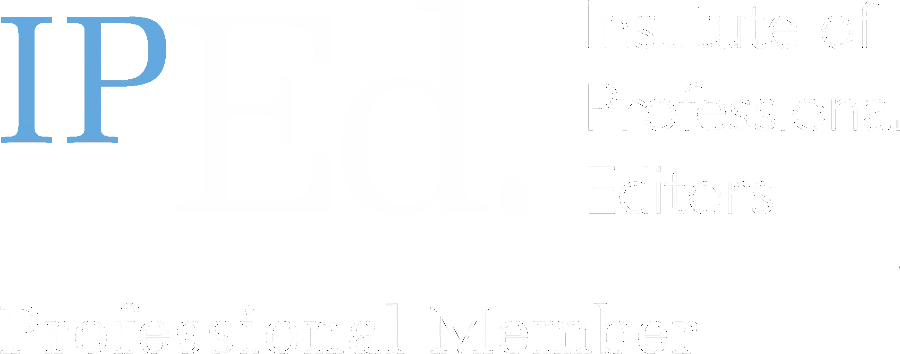The Top Ten Grammatical Mistakes in Academic Writing and How to Correct Them
Introduction
Writing an academic paper is no easy task, but it’s a necessary one. As you might have noticed, in college and graduate school (and even high school!), professors and teachers don’t grade you on the content of your paper—they grade you on how well you communicate your ideas. If your grammar or punctuation is distracting from what you’re trying to say, then it’s not working for you. So proofreading your academic writing can be the difference between getting a good grade or getting an A. Don’t let mistakes hold back your brilliant ideas!

Incorrect punctuation
Punctuation is the art of using the marks of punctuation in writing. There are many kinds of punctuation marks, including commas, periods, question marks and exclamation points. These marks are used to separate words, phrases and clauses (parts of a sentence) so that readers can understand your message. They also help you control tone (the way you feel about what you’re saying).
The comma separates parts of speech and indicates pauses in your sentences: “She told me that she doesn’t like salmon.” The period ends declarative sentences: “I love this cake!” The question mark ends an interrogative sentence: “Do you like this cake?” The exclamation point ends an imperative sentence: “Eat! Eat!”
Lack of parallel structure
Lack of parallel structure occurs when items in a list or a sentence are not grammatically parallel or do not follow the same pattern or structure. Here is an example of a sentence with a lack of parallel structure:
Incorrect: “I like to dance, hiking, and to sing.”
This sentence has a lack of parallel structure because the third item in the list (“to sing”) is not in the same form as the first two items (“to dance” and “hiking”). To make this sentence parallel, it should be revised to:
Correct: “I like to dance, hike, and sing.”
In the corrected sentence, all three items are now in the same form (infinitive verb).
Inappropriate use of pronouns
Inappropriate use of pronouns occurs when a pronoun is used in a way that is unclear, ambiguous, or inconsistent with its antecedent (the noun that the pronoun refers to). Here is an example of inappropriate use of pronouns:
Incorrect: “When Sarah saw her friend, she said she would meet her later.”
In this sentence, it’s unclear who the pronouns “she” and “her” are referring to. It’s unclear whether Sarah said that she would meet her friend later, or if Sarah’s friend said that she would meet Sarah later. To make the sentence clearer, we can revise it as:
Correct: ”When she saw her friend, Sarah said she would meet her later.”
In this corrected sentence, we swap the pronoun “she” with the name in the second clause to clarify who the speaker was.
Incomplete sentences
Incomplete sentences are a common problem in academic writing. The most important thing to remember is that every sentence must have a subject and verb—otherwise, it isn’t really a sentence at all.
An incomplete sentence can be confusing for the reader and can cause them to stop reading your work altogether. An incomplete sentence may also make you look unprofessional as an academic writer because it looks like you don’t know what you’re doing or how to write effectively.
Subject-verb agreement errors
First, it’s important to understand the basics of subject-verb agreement. A subject is the person or thing doing something in a sentence; a verb is an action word, like “walk,” “run,” or “eat.”
Subject-verb agreement errors occur when the subject and verb in a sentence do not match in number (singular or plural). Here is an example of a subject-verb agreement error:
Incorrect: “The group of students is going on a field trip.”
In this sentence, “group” is singular, but the verb “is going” is in the plural form, which creates an agreement error. To correct the error, we need to make the verb agree with the singular subject:
Correct: “The group of students is going on a field trip.”
Here’s another example of a subject-verb agreement error:
Incorrect: “The dogs barks loudly when visitors arrive.”
In this sentence, “dogs” is plural, but the verb “barks” is in the singular form, which creates an agreement error. To correct the error, we need to make the verb agree with the plural subject:
Correct: “The dogs bark loudly when visitors arrive.”
Sentence fragments
A sentence fragment is a group of words that is punctuated like a sentence but lacks a subject or a verb, or does not express a complete thought. Here is an example of a sentence fragment:
Incorrect: “In the park on a sunny day.”
This sentence lacks a verb and does not express a complete thought. It’s just a prepositional phrase. To make it a complete sentence, we can add a subject and a verb:
Correct: “I went for a walk in the park on a sunny day.”
In this corrected sentence, “I” is the subject, and “went” is the verb.
Dangling modifiers
A dangling modifier is a word or phrase that is intended to modify a noun or pronoun, but is placed in a sentence in a way that does not make it clear which noun or pronoun it is meant to modify. Here’s an example of a dangling modifier:
Incorrect: “After finishing my homework, the TV turned on.”
In this sentence, the modifier “After finishing my homework” is intended to modify the person who turned on the TV, but it is placed in a way that makes it seem like the TV was finishing the homework. This creates a dangling modifier error. To correct it, we can rephrase the sentence as follows:
Correct: “After finishing my homework, I turned on the TV.”
In this corrected sentence, we’ve added the subject “I” to show who turned on the TV and clarified the modifier by beginning the sentence with the clause “After finishing my homework.”
Improper diction and grammar in the title
• Title should be clear and concise.
• Title should be grammatically correct.
• Title should be a complete sentence.
• Title should be in present tense (e.g., not “The Study of the Effect of X on Y”).
Run-on sentences and comma splices
A run-on sentence is a sentence in which two or more independent clauses are joined together without proper punctuation or conjunctions. Here is an example of a run-on sentence:
Incorrect: “I went to the store I bought some apples.”
This sentence has two independent clauses, “I went to the store” and “I bought some apples,” that are joined together without proper punctuation or conjunctions.
A comma splice is a type of run-on sentence that occurs when two independent clauses are joined together with just a comma. Here is an example of a comma splice:
Incorrect: I love to read, I swim in the sea often.
In this sentence, “I love to read” and “I swim in the sea often” are two independent clauses that are joined together with just a comma.
To correct a run-on sentence or comma splice, we can use a period, a semicolon, or a conjunction to separate the independent clauses. Here are examples of the corrected versions of the previous examples:
Corrected run-on sentence: “I went to the store, and I bought some apples.”
Corrected comma splice: “I love to read, and I swim in the sea often.”
Lack of conciseness
Concise writing is more effective, readable, persuasive, memorable and efficient. It’s also clearer. Concise writing avoids unnecessary words and phrases not needed to convey meaning or ideas.
How can you be more concise?
Aim to convey more information with fewer words. Be direct.
Proofreading your academic paper is an essential step in the writing process.
Proofreading is the final step of your academic writing process. By proofreading, you ensure that your paper has no grammatical mistakes and that all the citations in your paper are correct (and properly formatted).
The best way to do this is by reading through it once again with a fresh set of eyes, or hiring a proofreading service. Having a human proofreader check over an academic manuscript is crucial for ensuring the quality and accuracy of the work. While automated grammar and spelling checkers can be useful, they are not always reliable, and they may miss important errors or misunderstandings that only a human can catch.
A human proofreader can provide valuable feedback on the clarity, coherence, and organization of the manuscript, as well as identify inconsistencies, errors, and other issues that may affect the credibility and readability of the work. By working with a human proofreader, authors can improve the overall quality of their academic manuscripts and increase their chances of succeeding in academia.
Conclusion
Proofreading your academic paper is an essential step in the writing process. By remaining attentive to detail and seeking feedback from others, you can ensure that your academic paper meets all of the necessary standards.

